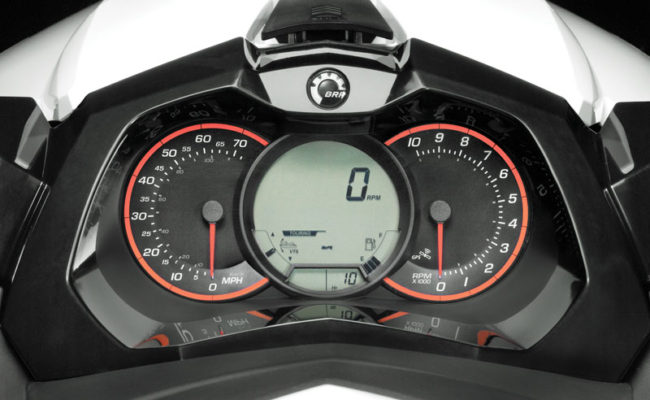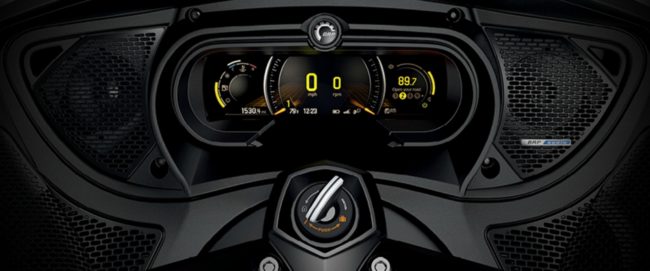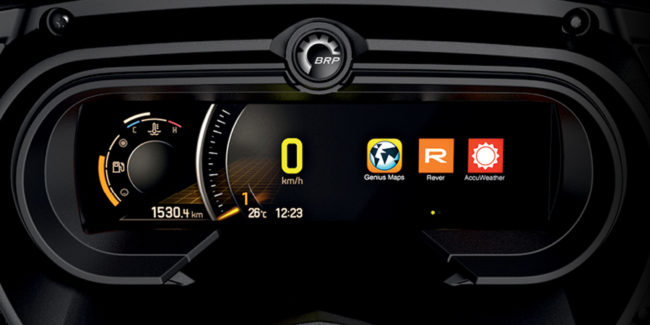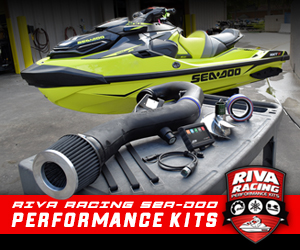
We know, we know. Sea-Doo just introduced a handful of brand-spankin’-new runabouts literally two months ago and we have the gall to start talking about what the company has planned for the future? It’s a little presumptuous, we get it – but like so, so many times before, we’re pretty stinkin’ sure about this stuff and we thought we’d open up a Christmas gift a little early for you guys, since you’ve stayed off of Santa’s naughty list. (Well, except for Florida. You guys really need to do something about Polk County.) Nope, what we’ve got is not so much hearsay as much as directly from the horse’s mouth and in a not-so-subtle way – meaning, they really want us to know about it.
So what on earth could be coming down the pike that isn’t already featured on the all-new ST³-based runabouts? The answer is two-fold, and it’s right in front of your noses. Let us explain: At the 2018 product line media introduction, we were given not only exclusive access to the new RXT, RXT-X, GTX and Wake models, but also a full roster of chief BRP and Sea-Doo staff to bounce inquiries off of. The Watercraft Journal was the only PWC publication to ask to see the engine compartment completely uncovered, and watched as the 13-torx screws were backed out and the lid lifted. Apart from the generous access to the engine, we looked forward towards the bow.

While it’s understandable to think that the new Sea-Doo’s Direct Access Front Storage bin would sit right on top of the engine’s air box and/or fuel cell, there is a surprising amount of room remaining. Remember that there is nothing fore of the central storage tub besides a quasi-sealed air induction box. The room above and around the fuel cell itself, is quite spacious. This of course, led to some questions with Sea-Doo Brand Manager James Heintz and BRP Engineering Director Martin Lachance, who both commented on the public outcry for a larger fuel tank. “There’s definitely room for one,” Heintz confessed. Lachance was more forthcoming, “We have made one, yes. Unfortunately, we must wait for certain…reasons.”
What could be the hold up, we queried. “California has specific laws requiring extra testing, more data. It can take up to several years to earn permission to sell it there.” As it stands, the current full-sized Sea-Doo runabouts wield a 15.9-gallon total fuel capacity, far less than the current FX-line of Yamaha WaveRunners and their 18.5 gallon tanks or the massive 20.6-gallon tanks in the bellies of Kawasaki’s Ultra JetSkis. And with Sea-Doo’s emphasis in 2018 being on adventure touring and exploration, the diminutive tank seems a little counter productive. Both Heintz and Lachance hinted that the process is “well underway” for a larger fuel tank to happen “in the near future.” So for now, the rest of the world has to wait for California’s bureaucracy to rubber stamp Sea-Doo’s larger fuel tank.


The second item of incoming changes will also take a couple of years, as the technology spreads to higher-selling product lines, but it is imminent nonetheless: a full-color digital instrument panel with seamless smartphone connectivity for app integration while riding. Whaaat? Yup, it’s real and it already exists. While Sea-Doo was drawing back the curtain on the new 2018 lineup, BRP was revealing its new Spyder lineup with the aforementioned full-color, all-digital dash. Both the Spyder and Sea-Doo ST³ machines also received BRP’s new Premium Audio systems both featuring Bluetooth connectivity for enabled mobile devices. Previously, the Spyder provided access to third-party smartphone apps thanks to BRP Connect. Now, riders can access a navigation application, play content, and listen to music directly.
Best of all, the system is extremely intuitive and simple to operate; a new joystick control is found near the left handgrip, letting riders navigate the screen functions while keeping both hands on the handlebars at all times. The joystick navigates a pair of large 4.3-inch screens (the dual screens provide optimal viewing from all angles), offering up live data like fuel level and speed perpetually on the left, and display-compatible apps on the right, like: Genius Maps: advanced GPS navigation platform that requires no internet connection; Music: sort easily through personal music libraries for the perfect playlist; AccuWeather: be prepared for the elements and pack accordingly with real-time weather information; and Rever: connect with friends on the go, share rides and discover new roads.

This major advancement is guaranteed to find its way to Sea-Doo in the coming years, and relatively soon. The modular design of Sea-Doo’s hardware from one trim level to the next, the new ST³ and Spyder both sharing the same Bluetooth connectivity for the Premium Audio System via mobile devices, and the familiar parts sharing becoming more common throughout all the brands (ACE engine management, LinQ storage systems, etc.), and even the standardized protective phone case on all of the new watercraft all speaks to the inevitability of the new dashboard.
We surmise that the change will happen with the rollout of the new GTI/GTS platform – expected for 2020, as it will mark 9 years since the last redesign. Of course, we also suspect all future GTI/GTS models will ride on a Polytec hull with a CM-Tech tech deck like all but two current GTI’s do (more on that revelation later). But for now, we hope that the larger fuel tank (believed to be comparable in capacity to Yamaha’s) and the high-tech digital dashboard (and adjoining left-side handlebar control pad) will be a plug-and-play installation, allowing for those purchasing a new 2018 ST³-based machine to go to their dealers and ask to be retroactively “upgraded”.







